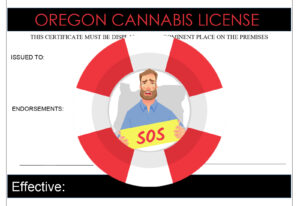As we previously summarized, on Friday, October 28, 2022, the Office of Cannabis Management (OCM) released its “Guidance for Adult-Use Dispensaries” (the Regulations). The Regulations provide guidance for Conditional Adult-Use Retails Dispensary (CAURD) licensees and applicants. While we believed that the Regulations could be explained in only five (5) parts, after we reviewed the Regulations, we felt it necessary to break it down even further and into more parts (sorry).
The information contained in the Regulations is a mix of substantive requirements, operational guidance and insight into the OCM’s plans for the issuance of licenses and operation of New York’s cannabis industry. As part of our series explaining and detailing the Regulations, this post is to provide licensees with guidance on the operations of their retail dispensaries. Of course, this post cannot go into each and every mundane detail of the Regulations. Instead, it should serve as a basis for your knowledge going forward and as usual, we encourage you to review the Regulations and consult with an attorney.
Hours of operation
Pursuant to the Regulations, Licensees may only be available to sell cannabis products, including through delivery, during their hours of operation. Each municipality is authorized to pass local laws and regulations governing the time, place, and manner, including the hours of operation for adult-use retail dispensary, which may include that:
A dispensary shall not be allowed to operate from 12:00 AM to 8:00 AM, unless given express written permission by such municipality, or the municipality passes a local ordinance, authorizing it to operate beyond such hours and shall not restrict operations to less than seventy (70) hours a week provided however, this provision shall not be construed as removing the licensees’ discretion to operate for less hours of operation. We note that these are two conflicting provisions: it remains unclear if there is a restriction on minimum hours of operations. We hope that the OCM will provide additional guidance clearing this up prior to the first opening of dispensaries.
This regulation does not prohibit licensees from allowing customers to place orders, such as through an online website or application outside of the licensee’s hours of operation at the physical location. However, licensees cannot provide the customer with any cannabis products they have ordered (including through delivery) until the licensee’s hours of operation begin.
Customer transactions
All customer transactions, regardless of whether they occur in-store, at a drive-thru window or area, or through delivery, must be completed by the licensee’s employees or a person authorized to complete such transactions as approved by the Cannabis Control Board (who that could be has not been defined or proposed in the Regulations).
All customer transactions, regardless of whether they occur in-store, at a drive-thru window or area, or through delivery, must result in an entry in the licensee’s inventory tracking system which must include, at a minimum:
- each item sold and that item’s price
- amount of tax due, including a separate delineation for each tax imposed
- quantity sold in that transaction; and
- form of the product (i.e., edible).
Additionally, every transaction’s entry must include:
- the worker completing the transaction
- the device used to complete the transaction
- the transaction’s unique identifier; and
- the date and time of the transaction.
As per with every retail business, customers must be offered a receipt after each transaction. This receipt can be physical or digital, but must include the same information as entered into the licensee’s inventory tracking system. A licensee cannot retain a customer’s personal information for marketing and advertising purposes unless a customer consents to the information being retained solely for this reason.
After the transaction, the products may be placed into an exit package for the customer. An exit package is not required, and customers may provide their own exit package, such as a reusable bag or backpack. If the licensee provides an exit package, it may only contain the licensee’s brand name and logo. Selling messages, mottos, and other brand markers (besides the brand name and logo) are not allowed on the exit package.
Customer age
As expected, the Regulations reiterated that adult-use cannabis products cannot be sold to individuals under twenty-one (21) years of age. The Regulations provide that dispensary workers must inspect a customer’s identification before that customer can purchase cannabis or cannabis products. During delivery to customers, the dispensary’s employee must verify the identity and age of the individual accepting the order at the point of delivery or curb-side-pick-up.
Dispensary workers are not required to decline a sale to an individual who is at least twenty-one (21) solely because they are accompanied by an individual under twenty-one (21) years of age. However, if a worker believes, based on the information available to them, that the sale would create a risk of diversion of cannabis products to an individual under twenty-one years of age, they must decline such sale. For example, if evident that the 21+ adult is solely buying the cannabis product for the underage individual accompanying them into the dispensary, the worker must decline that sale.
Refusal of service
Dispensary workers may refuse to sell cannabis products to a customer if they believe the sale would endanger the health or safety of the customer. Workers must refuse a sale if, based on the information available to them at the time, the sale would result in the customer exceeding the legal possession limit (3 ounces of cannabis and up to 24 grams of concentrated cannabis) or would create a risk of diversion to an underage individual.
























